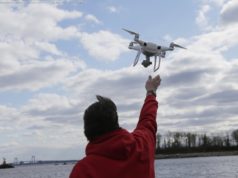North Korea’s nuclear threat has been kept largely on the back burner by President Biden’s administration, but pressure has been rising.
Faced with other more pressing developments in Ukraine and Gaza, the Biden administration has largely kept the threat of North Korea’s nuclear program on the back burner.
But tensions around the Korean peninsula have been ratcheting up for years, opening a new and uncertain chapter in a pitched standoff that, just six years ago under then-President Trump, seemed to be on the cusp of a major breakthrough.
So what happened? And what lies in store for whoever wins the White House in November?
In 2018, hopes ran high that North Korea might finally relinquish its nuclear arsenal.
Following three summits between then-South Korean President Moon Jae-in and North Korean leader Kim Jong Un, the two countries issued a joint declaration pledging better ties between the countries, the easing of military tensions and a mutual commitment to the “denuclearization of the Korean peninsula.”
That unprecedented document, the Panmunjom Declaration, set the stage for meetings between Trump and Kim Jong Un, who had until then been slinging insults at one another, with Trump belittling Kim as “little rocket man” and Kim calling Trump a “dotard” — or a senile old person.
Held over the course of 2018 and 2019 in Singapore, Hanoi and the Korean Demilitarized Zone, the three meetings produced several gestures of goodwill, such as Pyongyang repatriating the remains of American soldiers who died in the Korean War and dismantling several rocket launch sites. At the DMZ, Trump became the first sitting U.S. president to set foot on the North Korean side of the border.
But the meetings failed to achieve a denuclearization deal, running into the same intractable problem that has defined the conflict for decades: the United States’ reluctance to accept anything less than total and immediate nuclear disarmament and North Korea’s equal reluctance to surrender its primary source of leverage.
Things have gone downhill ever since.
In June 2020, North Korea blew up a joint liaison office that had been installed on its side of the border to facilitate communication with Seoul. It also resumed its nuclear program, rebuilding the nuclear test site it had partially demolished following the Panmunjom Declaration.
North Korea has launched more than 100 missiles since 2022, and U.S. and South Korean officials have said it is likely preparing to conduct its seventh nuclear test — the first since 2017.
In September 2022, North Korea passed a law officially declaring itself a nuclear state, with Kim Jong Un vowing that the country would “never give up” its nuclear arsenal, which is estimated to contain at least 40, and perhaps more than 100, warheads.
The new law specifies several scenarios in which the country would use nuclear weapons, including preemptive strikes in the event of imminent attack.






